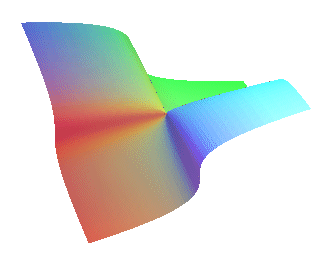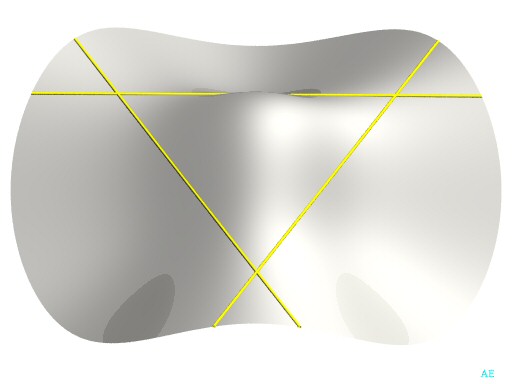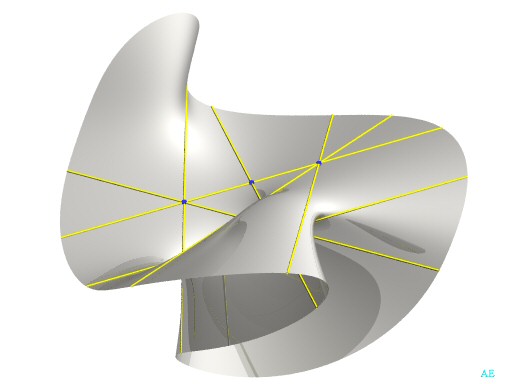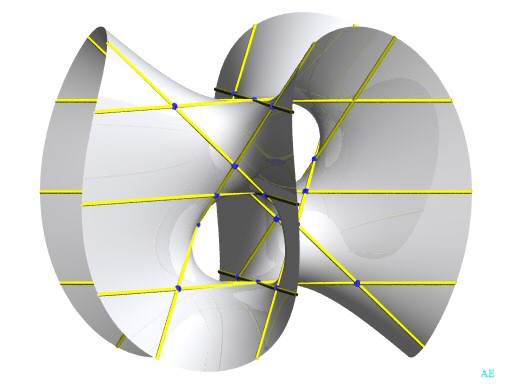

| next surface | previous surface | 2D curves | 3D curves | surfaces | fractals | polyhedra |
CUBIC SURFACE
The cubic surfaces are the algebraic surface of degree 3 (and not the surfaces shaped like a cube... If you are looking for such a surface, see here).
Examples:
- the rational
cubics
- the Cayley
surface
- the Clebsch
surface
- the neiloid
- the Goursat
tetrahedral surfaces
 |
surface z3
= axy, projectively equivalent to the previous one:
 |
A property that has really excited mathematicians is that any smooth complex surface of degree 3 contains exactly 27 straight lines (whereas any smooth surface of degree 2 is a ruled surface, and a smooth projective surface of degree greater than or equal to 4 may not contain any lines).
In real projective geometry, this Salmon-Cayley
theorem becomes: any projective smooth
surface of degree 3 contains exactly 3, 7, 15 or 27 real lines (result
due to Schläfli); the Clebsch surface
is the only one, up to homography, to have 27 real lines. The surface
of Henrici also possesses 27 lines, but each is nonuple.
| Example with 3 real lines:
Contains the line |
 |
| Example with 7 real lines:
Contains the 4 lines In the view opposite, the 3 lines at infinity were brought back at finite distance. |
 |
| Example with 15 real lines:
|
 |
 |
The Danish mathematician C. Juel extended the notion
of algebraic surface of degree 3 to that of surface of order
3, that intersects with any non included line at a maximum number of 3
intersection points; he then proved, be the surface algebraic or not, that
any smooth surface of order 3 contains 3, 7, 15 or 27 lines.
This silver model of a surface of order 3, made by the jeweler Evald Nielsen of Copenhagen, was offered to Juel for his 70th birthday in 1925, during his scientific jubilee. After Juel's death, this piece was given by the family to the Copenhagen Institute of Mathematics where it is still displayed today. Give me your opinion: how many lines are included in this surface? 3, 7, 15, or 27? Picture provided by L. G. Vidiani. |
| WEBOGRAPHY
Oliver Labs's PhD thesis: enriques.mathematik.uni-mainz.de/labs/diplomArbeit_OliverLabs.pdf
|
| next surface | previous surface | 2D curves | 3D curves | surfaces | fractals | polyhedra |
© Robert FERRÉOL, Alain ESCULIER 2017